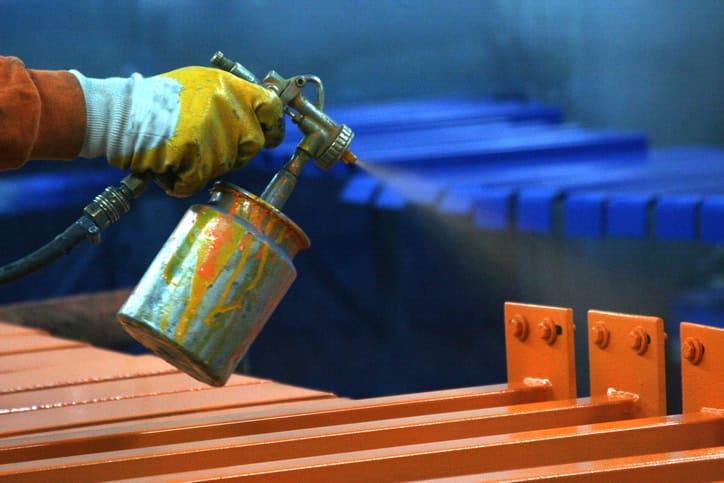When it comes to managing energy efficiency in commercial buildings, the choice of paint might not be the first solution that comes to mind. However, thermal coating paint has become an innovative way to address energy loss, reduce heating and cooling costs, and enhance the overall comfort of commercial spaces.
You’re not alone if you’re curious about this advanced paint technology. Many business owners are exploring whether thermal coating paint is worth installing in their commercial spaces. Let’s dive into the science behind thermal coating paint and discover how it works in commercial applications.
Key Takeaways
- Thermal coating paint is a barrier against heat transfer, helping regulate indoor temperatures.
- This technology reduces energy consumption, leading to lower utility bills.
- It is especially beneficial for commercial spaces with large surface areas exposed to external weather conditions.
- Understanding the science behind thermal coating paint can help you make an informed decision about its application in your business.
What is Thermal Coating Paint?
At its core, thermal coating paint insulates surfaces by reflecting heat away from or back into a building. Unlike traditional paint, which primarily serves an aesthetic purpose, thermal coating paint has functional properties that help maintain a building’s internal temperature.
This is achieved by including specialized materials, such as ceramic microspheres embedded within the paint. These tiny spheres have the unique ability to reflect infrared radiation, the main form of heat transfer.
Applying thermal coating paint can be a game-changer in a commercial setting, where energy efficiency is a key concern. Whether it’s keeping heat out during the summer or retaining warmth in the winter, this paint technology can significantly impact a building’s energy performance.
How Does Thermal Coating Paint Work?
The effectiveness of thermal coating paint lies in its ability to minimize heat transfer through conduction, convection, and radiation. The ceramic microspheres within the paint create a reflective barrier that bounces heat away from the building. When applied to exterior walls or roofs, thermal coating paint reduces the heat absorbed by the building, helping to maintain cooler indoor temperatures during hot months. Conversely, in colder climates, the same technology helps to retain heat within the building, reducing the need for excessive heating.
This dual function makes thermal coating paint particularly valuable in commercial applications where energy efficiency is a top priority. By reducing the need for air conditioning and heating, businesses can achieve significant cost savings on their energy bills.
The Science Behind the Technology
The key to understanding thermal coating paint lies in its composition. Ceramic microspheres, a vital paint component, are responsible for their insulating properties. These hollow microspheres create an air-filled pocket that acts as an insulator. When heat encounters the surface coated with thermal paint, it is reflected by the microspheres rather than absorbed by the building material.
Moreover, the paint’s reflective properties are not limited to visible light. Thermal coating paint is designed to reflect infrared radiation, which is responsible for a significant portion of heat transfer. This ability to reflect infrared radiation makes thermal coating paint highly effective in maintaining a stable indoor temperature, regardless of external weather conditions.
Applications in Commercial Settings
Applying thermal coating paint to commercial buildings, particularly those with large surface areas exposed to the elements, can greatly benefit them. Warehouses, manufacturing facilities, and office buildings are just a few examples of commercial spaces where thermal coating paint can enhance energy efficiency.
In addition to walls and roofs, thermal coating paint can be used on other surfaces, such as metal structures, storage tanks, and pipelines. In industrial settings, where temperature regulation is crucial to maintaining product quality and employee comfort, thermal coating paint provides an effective solution to minimize heat transfer and maintain consistent temperatures.
Benefits of Thermal Paint in Commercial Applications
- Energy Efficiency: One of the primary benefits of thermal coating paint is its ability to reduce energy consumption. By minimizing the need for heating and cooling, businesses can lower their utility bills and reduce their environmental impact.
- Cost Savings: While the initial investment in thermal coating paint may be higher than traditional paint, the long-term cost savings on energy bills make it worthwhile. Businesses can see a return on investment through reduced operating costs.
- Enhanced Comfort: Maintaining a consistent indoor temperature is essential for employee comfort and productivity. Thermal coating paint reduces temperature fluctuations, helping create a more comfortable work environment.
- Sustainability: Thermal coating paint contributes to a building’s sustainability by reducing energy consumption. Businesses that prioritize green initiatives can benefit from this technology’s environmental advantages.
- Durability: Thermal coating paint is designed to withstand harsh weather conditions, making it a durable option for commercial buildings. Its long-lasting performance ensures that the building remains protected for years to come.
Common Misconceptions About Thermal Paint
While thermal coating paint offers numerous benefits, addressing some common misconceptions is essential. One misconception is that it can eliminate the need for insulation. While it enhances a building’s insulation, it should be used with traditional insulation methods for optimal results.
Another misconception is that thermal coating paint is only effective in extreme climates. In reality, thermal coating paint can benefit commercial buildings in various climates by reducing energy consumption and enhancing comfort.
Why Should You Consider Thermal Coating Paint?
If you’re considering ways to improve the energy efficiency of your commercial space, thermal coating paint is an option worth exploring. Its ability to reflect heat, reduce energy consumption, and enhance comfort makes it valuable to any commercial building. Understanding the science behind this technology lets you decide whether thermal coating paint is the right choice for your business.
Is Thermal Coating Paint Right for You?
Choosing the right paint for your commercial building is more than an aesthetic decision. It’s about improving energy efficiency, reducing costs, and enhancing the overall comfort of your space. Thermal coating paint offers a unique solution beyond traditional paint, providing functional benefits that can significantly impact your building’s performance.
If you’re ready to explore the benefits of thermal coating paint for your commercial space, contact DC Painting KC at (816) 327-9884 for a free estimate. Our team of experts is here to help you make the right choice for your business, ensuring that your building is energy-efficient and visually appealing. Don’t wait—call us today and discover the difference thermal coating paint can make!






